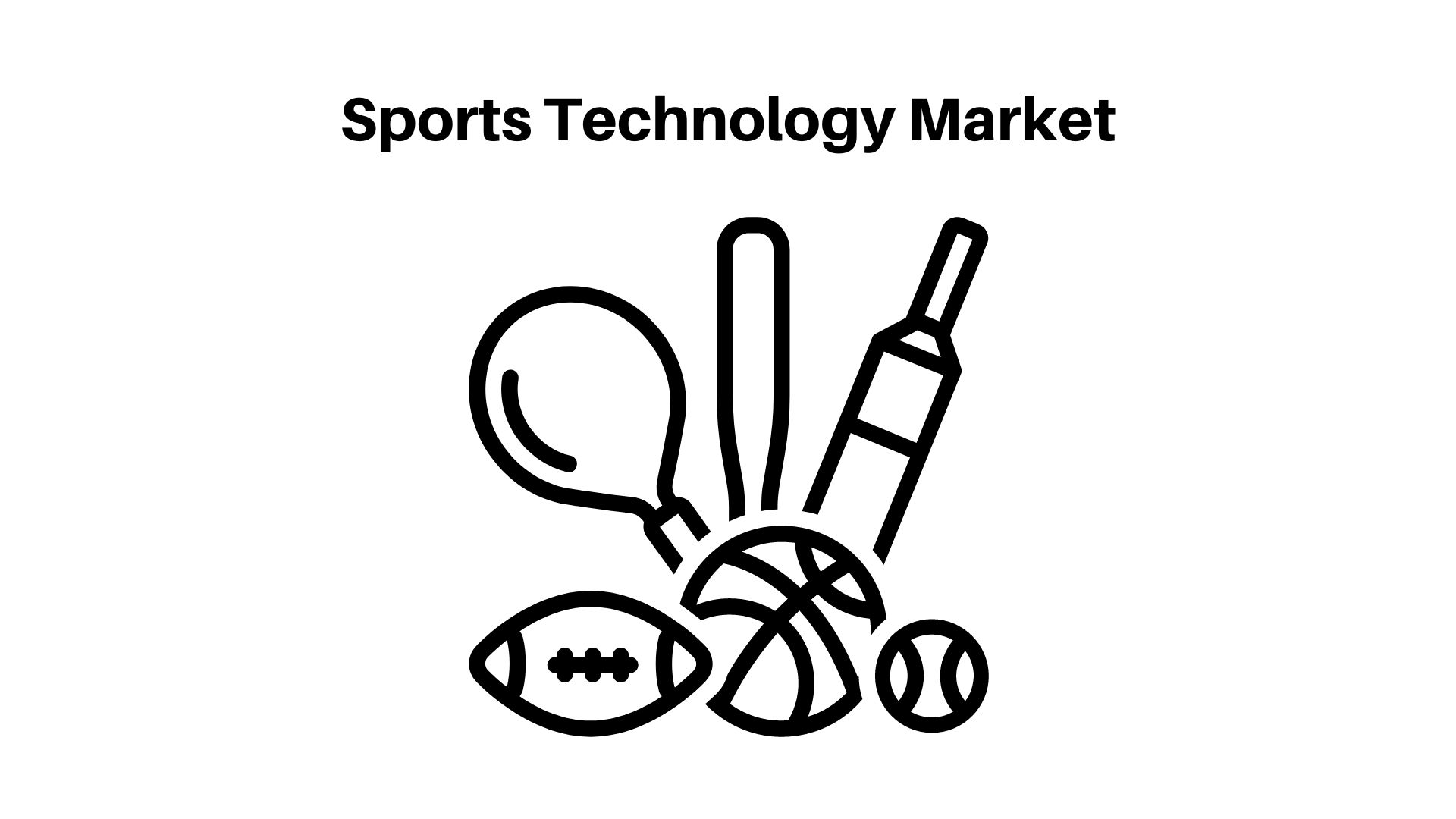Sports Technology Market Size Worth USD 87.19 Bn by 2032

Page Contents
Sports Technology Market Overview
Published Via 11Press: The sports technology market encompasses the application of technology to various aspects of sports, such as athlete performance, training, equipment, and fan engagement. This market offers products and solutions like wearables, smart equipment, mobile apps, virtual/augmented reality experiences, and data analytics.
The global sports technology market is expected to experience significant growth over the coming years, driven by factors such as increasing investment in sports technology by professional sports organizations, rising demand for real-time data analysis, and escalating popularity of sports and fitness activities.
The global sports technology market size is forecast to reach USD 87.19 billion by 2032 from USD 14.56 billion in 2022, rising at a compound annual growth rate (CAGR) of 19.60% during the forecast period.
Sports technology is led by Adidas, Nike, Under Armour, Garmin, Apple, Sony, and Fitbit. These companies offer an array of sports technology products and solutions such as smartwatches, fitness trackers, smart shoes, and virtual reality sports training systems.

Key Takeaways
- The sports technology market is experiencing rapid growth due to increased investments in sports technology by professional sports organizations, demand for real-time data analysis, and an uptick in fitness activities.
- The market offers a vast array of products and solutions, such as wearables, smart equipment, mobile apps, virtual/augmented reality experiences, and data analytics.
- Major companies in the sports technology market include Adidas, Nike, Under Armour, Garmin, Apple, Sony, and Fitbit.
- Sports technology is becoming more deeply integrated into athlete performance, training methods, equipment design, and fan engagement strategies.
- Sports technology adoption is expected to accelerate in the coming years as sports organizations strive to enhance athlete performance and fan experience.
- The sports technology market presents numerous opportunities for growth and innovation, as technology continues to play an increasingly significant role in the sports industry.
Request For Sample Report: https://market.us/report/sports-technology-market/request-sample/
Regional Snapshot
- North America: North America is the leading sports technology market, led by major leagues such as the NFL, NBA, and MLB. The region also houses numerous sports technology companies and startups with high demand for real-time data analytics and fan engagement solutions.
- Europe: Europe is the second-largest market for sports technology, boasting a significant presence of professional sports organizations and an increasing interest in fitness and health activities. Wearables and fitness trackers are popular items in this region.
- Asia-Pacific: The Asia-Pacific region is experiencing a meteoric rise in sports technology demand due to an explosion in fitness activities, especially in China and India. There are numerous sports technology startups based here, as well as a high interest in virtual and augmented reality solutions.
- Latin America: Latin America has seen remarkable growth in the sports technology market, particularly soccer and other team sports. There is high demand for equipment such as trackers and wearables, plus data analytics solutions to enhance athlete performance.
Drivers
- Sports teams and organizations are increasingly turning to data analytics for real-time insights into player performance, team strategy, and fan engagement. This has resulted in the development of sophisticated data analytics tools and technologies that offer these perspectives on player and team performance.
- Increased Interest in Sports and Fitness Activities: As people become more health-conscious and active, they're seeking ways to monitor their progress and maximize performance. Sports technology products like wearables, fitness trackers, and smart equipment are seeing increased demand.
- Advancements in Technology: Cutting-edge technologies such as virtual and augmented reality, artificial intelligence, and machine learning are giving sports technology companies new avenues for innovation. These breakthroughs are being employed to develop advanced training systems, immersive fan experiences, and personalized coaching tools.
- Investment by Sports Organizations: Professional sports organizations are investing heavily in sports technology to enhance athlete performance, and fan experiences and gain a competitive edge. This investment has ignited innovation within the sports technology market and created new opportunities for both startups and established firms alike.
- Rise of E-Sports: The rapid expansion in esports presents new business opportunities for sports technology companies. E-sports require advanced technologies like virtual reality, live streaming, and gaming platforms; those who can provide these solutions will see rapid expansion.
Restraints
- High Cost: Sports technology products and solutions can be expensive, which limits their accessibility to individuals and smaller organizations. Furthermore, high costs create a barrier to entry for startups and new companies.
- Data Privacy Concerns: The use of data analytics and other technologies in sports raises privacy and security issues. Sports organizations must take great care to safeguard the personal data of athletes, fans, and other stakeholders.
- Lack of Standardization: In the sports technology market, there is a lack of standardization which makes it difficult for organizations to compare products and solutions from different vendors. This makes selecting the ideal technology solutions difficult for organizations.
- Limited Adoption: Though the sports technology market is growing, the adoption of new technologies in this industry can be slow due to organizations being reluctant to alter existing practices or invest in them. This could restrict innovation within the sector.
- Cultural and Regulatory Barriers: Certain countries and cultures may not be as open to sports technology, which could limit market growth in those regions. Furthermore, regulations and policies differ significantly between nations, creating obstacles for companies operating across multiple locales.
Opportunities
- Development of New Technologies: The sports technology market is still developing and offers enormous potential for the creation of cutting-edge technologies that can enhance athlete performance, enhance fan experiences, and generate additional revenues for sports organizations.
- Expansion into Emerging Markets: As the sports technology market expands rapidly in emerging regions like Asia-Pacific and Latin America, companies have the chance to broaden their reach and access new customer segments.
- Collaboration with Sports Organizations: Sports technology companies can partner with sports organizations to develop products and solutions tailored to their requirements. This partnership provides companies with invaluable insight into the industry, enabling them to craft tailored solutions that address specific problems faced by sports organizations.
- Personalization of Products and Services: Personalization is becoming increasingly important in the sports technology market, as athletes and fans demand tailored products and services tailored to their individual requirements. Companies offering personalized solutions are well-positioned for growth in this space.
- Rise of E-Sports: The growth in e-sports presents new opportunities for sports technology companies. E-sports require advanced technologies like virtual reality, live streaming, and gaming platforms; those that can provide these services will experience significant expansion.
Challenges
- Resistance to Change: The sports industry can be slow to adopt new technologies and practices, with many organizations being resistant to change. This makes it difficult for sports technology companies to gain traction in the market and create new opportunities.
- Competition: The sports technology market is highly competitive, with numerous established players and startups competing for market share. Companies must be able to differentiate themselves and offer unique value propositions in order to stand out in this crowded space.
- Limited Resources: Many startups and new companies in the sports technology market may lack adequate resources, making it difficult to attract investment or talent. This makes developing and marketing innovative products or solutions difficult.
- Data Privacy and Security: The use of data analytics and other technologies in sports raises privacy and security issues. Companies must take great care to protect the personal data of athletes, fans, and other stakeholders while adhering to relevant regulations.
- Regulatory Barriers: Regulations and policies may differ greatly between countries, creating entry barriers for companies operating across multiple regions. Companies must be aware of the regulatory landscape in different markets and be able to successfully maneuver through complex regulatory environments.
Grow your profit margin with Market.us Get this Report
Recent Developments
- Wearable Technology: Wearable technology is becoming more and more commonplace in sports, as athletes use devices such as smartwatches, fitness trackers, and biometric sensors to track their performance and monitor their health.
- Virtual and Augmented Reality: Virtual and augmented reality technologies are revolutionizing the fan experience, giving viewers a brand-new way to engage with games and events.
- Data Analytics: Data analytics is being employed to analyze performance data and enhance athlete training and development. Sports organizations also rely on data analytics for insights into fan behavior, allowing them to create tailored marketing campaigns.
- Esports: Esports has seen an extraordinary surge in popularity, with millions tuning into competitive video gaming events around the world. This presents sports technology companies with new opportunities to provide advanced gaming platforms and other technologies that will fuel this rapidly expanding industry.
- Fan Engagement: Sports technology is being employed to foster fan involvement, with teams and organizations using social media, mobile apps, and other digital platforms to foster closer connections with fans while creating new revenue streams.
Key Market Segments
Type
- Device
- Smart Stadium
- Esports
- Sports Analytics
Application
- Soccer
- Baseball
- Basketball
- Ice Hockey
- American Football/ Rugby
- Tennis
Key Market Players
- IBM
- Ericsson
- Cisco
- Fujitsu
- SAP
- Oracle
- NEC
- LG
- Sharp
- Samsung
Report Scope
| Report Attribute | Details |
| The market size value in 2022 | USD 14.56 Bn |
| Revenue forecast by 2032 | USD 87.19 Bn |
| Growth Rate | CAGR Of 19.60% |
| Regions Covered | North America, Europe, Asia Pacific, Latin America, and Middle East & Africa, and the Rest of the World |
| Historical Years | 2017-2022 |
| Base Year | 2022 |
| Estimated Year | 2023 |
| Short-Term Projection Year | 2028 |
| Long-Term Projected Year | 2032 |
Frequently Asked Questions
Q: What is sports technology?
A: Sports technology refers to the application of advanced technologies, data analytics, and other tools in order to enhance athlete performance, boost fan experiences, and generate new revenue streams for sports organizations.
Q: What are some examples of sports technology?
A: Wearable devices like fitness trackers and biometric sensors, virtual and augmented reality technologies, data analytics software programs, as well as advanced gaming platforms for esports competitions can all be considered sports technology.
Q: How big is the sports technology market?
A: According to some estimates, this sector of technology is expected to expand rapidly over the coming years, reaching a size of over USD 87.19 billion by 2032.
Q: What are the major drivers of the sports technology market?
A: The primary factors driving growth in this space include an increasing need for data analytics and other advanced technologies to enhance athlete performance and fan experience, as well as the growing popularity of esports.
Q: What are some of the challenges confronting the sports technology market?
A: Main challenges include resistance to change within the sports industry, competition from other companies, limited resources for startups, concerns about data privacy and security issues, as well as regulatory obstacles.
Q: What are some of the opportunities in the sports technology market?
A: The primary opportunities exist within developing new technologies, expanding into emerging markets, collaborating with sports organizations, personalizing products and services, as well as the growth of esports.
The team behind market.us, marketresearch.biz, market.biz and more. Our purpose is to keep our customers ahead of the game with regard to the markets. They may fluctuate up or down, but we will help you to stay ahead of the curve in these market fluctuations. Our consistent growth and ability to deliver in-depth analyses and market insight has engaged genuine market players. They have faith in us to offer the data and information they require to make balanced and decisive marketing decisions.



